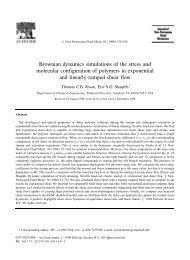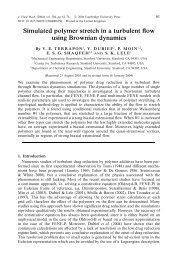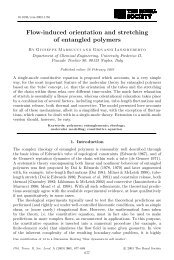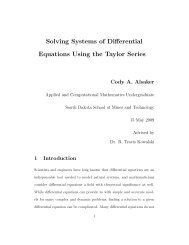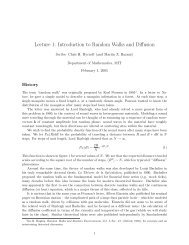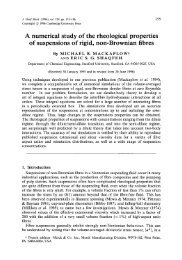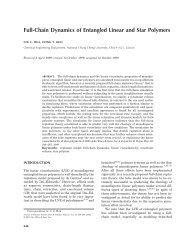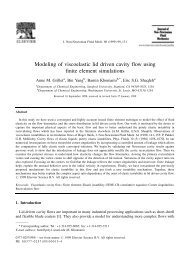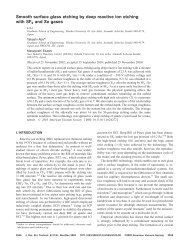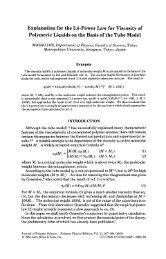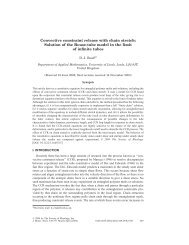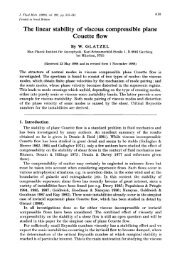Molecular modelling of entangled polymer fluids under flow The ...
Molecular modelling of entangled polymer fluids under flow The ...
Molecular modelling of entangled polymer fluids under flow The ...
You also want an ePaper? Increase the reach of your titles
YUMPU automatically turns print PDFs into web optimized ePapers that Google loves.
2.3. DOI-EDWARDS MODEL OF ENTANGLED POLYMERS 23<br />
a)<br />
b)<br />
Figure 2.5: <strong>The</strong> many body problem <strong>of</strong> an <strong>entangled</strong> melt (a) reduced to a single chain<br />
problem by replacing the individual entanglements with a confining tube (b).<br />
Figure 2.6: A chain in an entanglement network (narrow line) and its corresponding<br />
primitive path (broad line).<br />
By introducing the number <strong>of</strong> monomers per entanglement segment, N e = N/Z, the<br />
following relation can be found<br />
N e = a2<br />
b 2 . (2.27)<br />
Equivalently the molecular mass between entanglement segments, M e , is <strong>of</strong>ten quoted,<br />
giving Z = N/N e = M/M e .<br />
<strong>The</strong> tube diameter is taken to be independent <strong>of</strong> molecular mass and chain topology,<br />
depending only on the chemistry <strong>of</strong> the molecule. If the tube model can be made to<br />
agree simultaneously with a wide range <strong>of</strong> different data sets this is still a sufficiently<br />
demanding test to suggest that the tube idea has captured the dominant physics <strong>of</strong> the<br />
problem. At the moment there is no consensus on numerical values for a or a unique<br />
method <strong>of</strong> determination. Attempts to produce a more unified quantitative theory are<br />
a current focus <strong>of</strong> much theoretical work (see, for example, Pattamaprom et al. (2000)<br />
or Likhtman and McLeish (2002)).



